
The Saigon Waterworks tower of 1921 (photo by Tom Hricko)
The history of the old water tower in the Sài Gòn Water Corporation complex at 1 Võ Văn Tần is integrally linked with the early development of what we know today as Turtle Lake (Hồ Con Rùa).
Before the arrival of the French, the modern Turtle Lake intersection was the location of the Vọng Khuyết gate, one of two northern entrances to the great 1790 Gia Định Citadel. Following the latter’s destruction in 1835, the current road network began to develop.
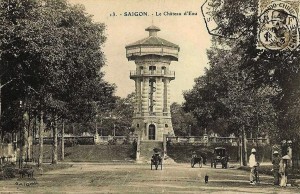
The Château d’eau de Saigon of 1877
After the French conquest, one of the most serious problems facing French colonial administrators was the provision of fresh water. It was thus fortuitous that in 1877, while laying the foundations of the Notre Dame Cathedral, workers chanced upon a deep aquifer. Later that year, the first Château d’eau (water tower) was built on the junction of rue Sohier and rue Catinat prolongée (the modern Turtle Lake) to supply drinking water to city residents via a network of underground conduits and street pumps. The intersection then became known as the Rond-point du Château d’eau.
In her 1892 book Les Indes et l’Extrême Orient, impressions de voyage d’une parisienne, globetrotting French widow Louise Bourbonnaud describes this “artesian well” as “a beautiful work on a very high platform, with a spiral staircase fitted into a cage.” She adds: “The local people were astonished when they first saw the devils from the west take spring water from the ground. I can imagine their amazement.”
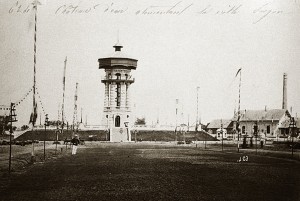
This photograph of the Château d’eau de Saigon also shows the adjacent steam pumping station
The Château d’eau was initially powered by a powerful steam pumping apparatus, installed on the west side of the intersection where the Hồ Chí Minh City branch office of the Ministry of Education and Training now stands. However, the electrification of the pumping mechanism in 1910 facilitated the redevelopment of that site, initially as the headquarters of the Commissariat de Police for the 3rd Arrondissement.
As Saigon’s population grew, the old water supply network proved inadequate and the city began to experience frequent water shortages. Eventually, in 1918, work began on the creation of a new municipal potable water system, comprising waterworks in Saigon and Chợ Lớn, linked to wells in Phú Thọ, Tân Sơn Nhất and Gò Vấp. When that was completed in 1921, the old Château d’eau was demolished.
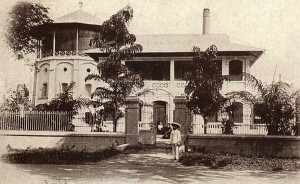
The Usine des eaux de Saigon, built in 1918-1921
The Usine des Eaux de Saigon of 1921 incorporated a large water tower which may still be seen today, along with several other old waterworks buildings, in the block bordered by Võ Văn Tần, Pasteur, Nguyễn Thị Minh Khai and Phạm Ngọc Thạch streets in Hồ Chí Minh City’s District 1.
Unlike many colonial artefacts in the city, this one was recently declared a heritage site by the Saigon Water Company SAWACO, and its future now looks secure.
In November 1921, the Rond-point du Château d’eau, where the original water tower had stood, was renamed place Maréchal Joffre, in anticipation of the visit of Marshal Joffre to Sài Gòn a month later. On 11 November 1927, a Monument aux Morts de la Grande Guerre (Great War memorial and cenotaph) was built at the centre of the roundabout, surrounded by a small lake.
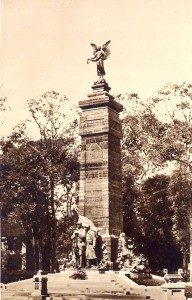
The Monument aux Morts de la Grande Guerre was installed on the former Rond-point du Château d’eau in November 1927
The Monument aux Morts \was partially destroyed during a demonstration in 1964, although the intersection continued to be known in Vietnamese as Soldiers’ Square (Công trường Chiến sĩ) until the installation of the current “Turtle Lake” monument in the late 1960s.
Another survivor of Saigon’s early water supply network infrastructure is the attractive old villa at 3 Phạm Ngọc Thạch, on the junction with Nguyễn Thị Minh Khai street, which was originally built as the director’s residence of the Indochina Water and Electricity Company (Compagnie des Eaux et d’Électricité d’Indochine).
It currently serves as the headquarters of the Institute of Transport Science and Technology, Southern Branch Office (Phân viện Khoa học và Công nghệ Giao thông Vận tải phía Nam).
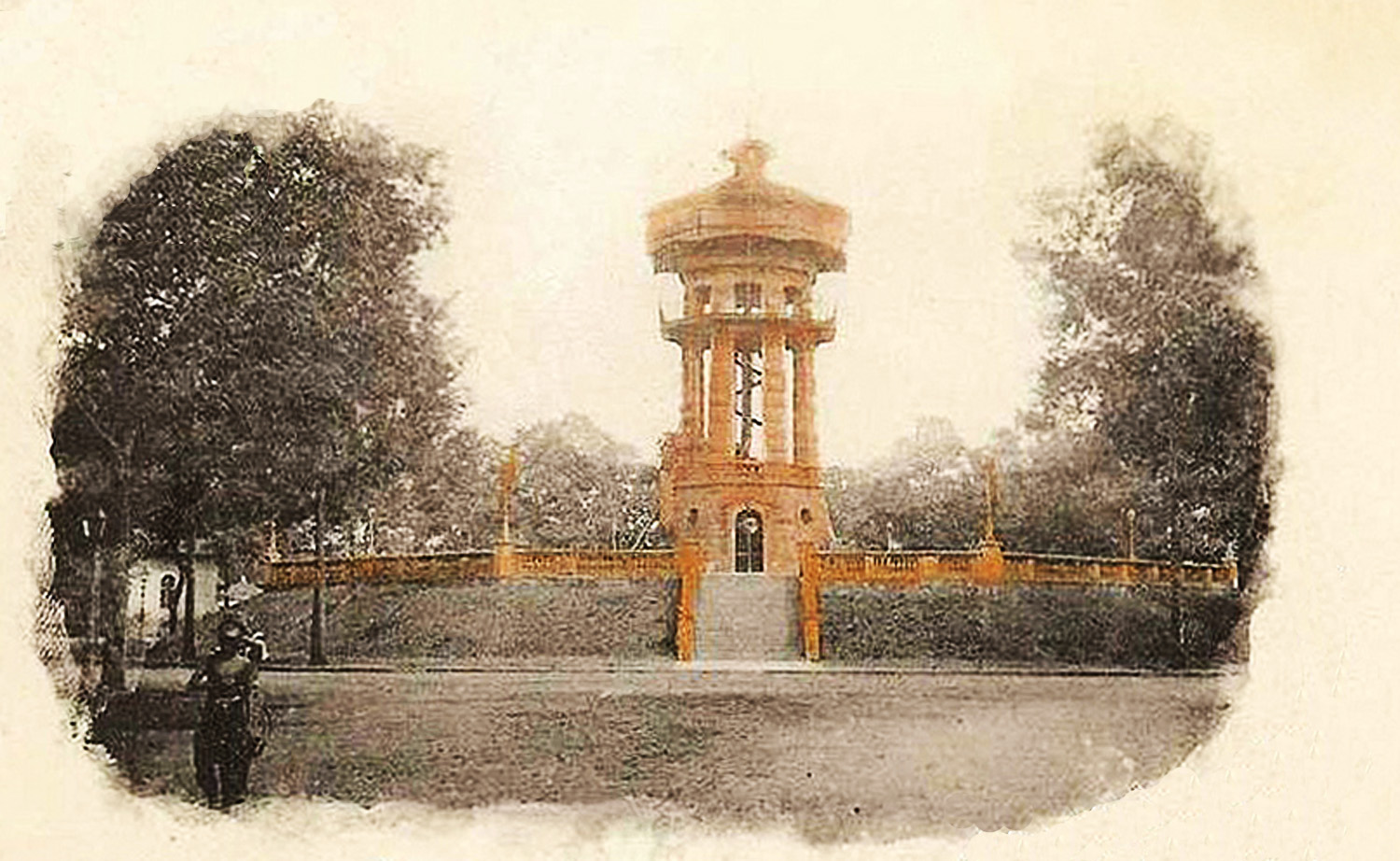
A “colorised” image of the Château d’eau de Saigon of 1877
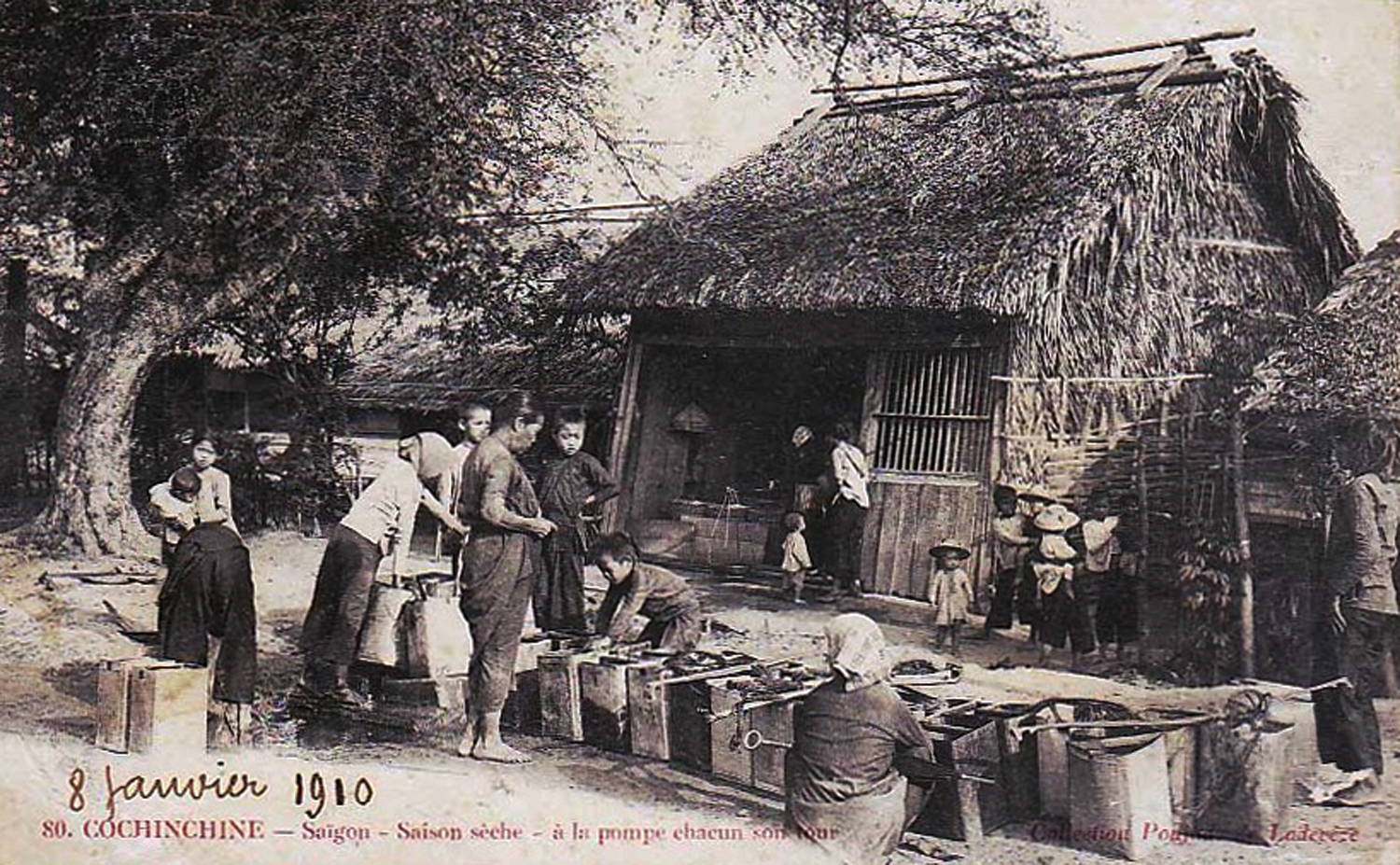
A streetside water pump in late 19th century Saigon
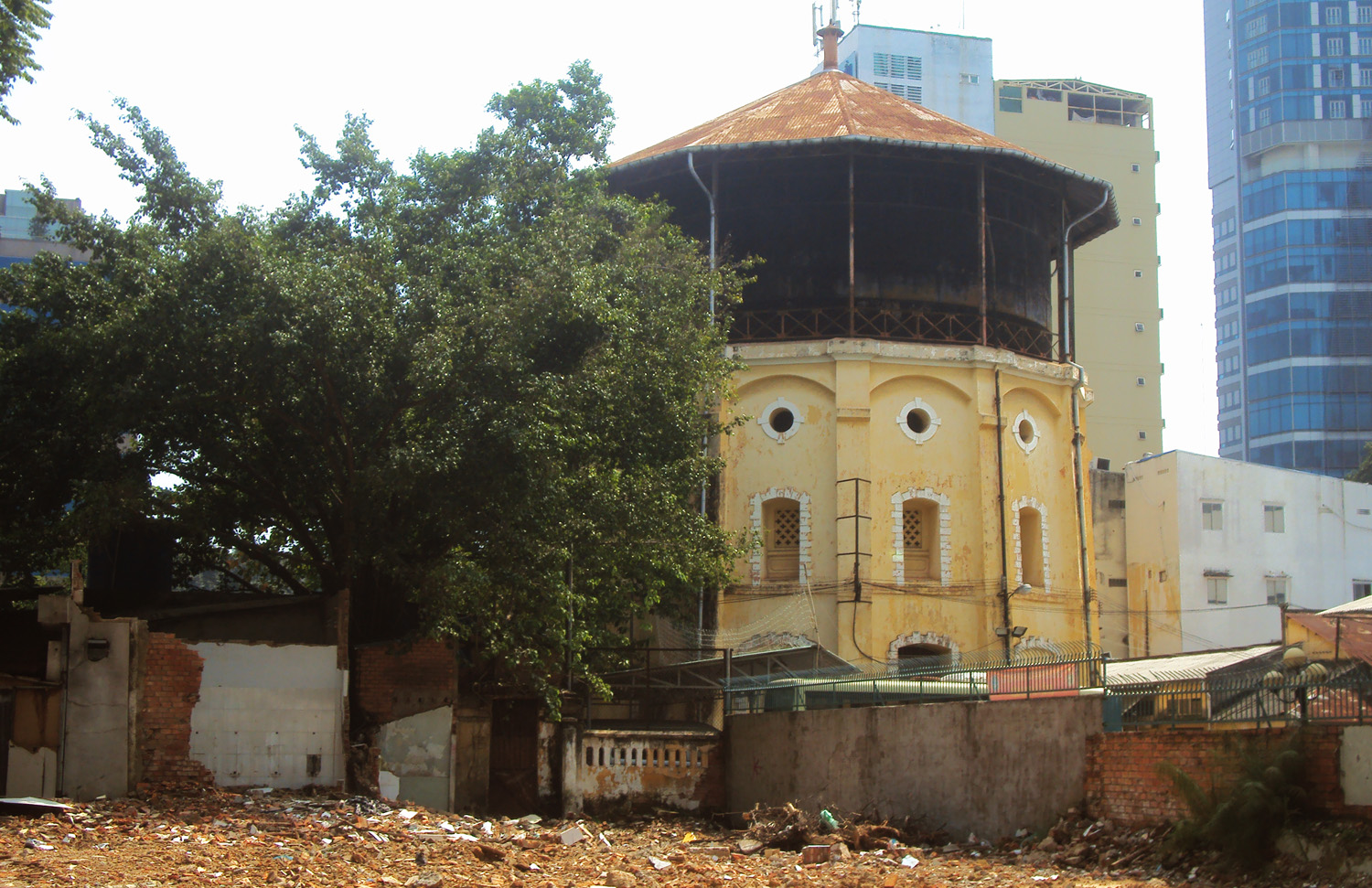
The Saigon Waterworks tower today
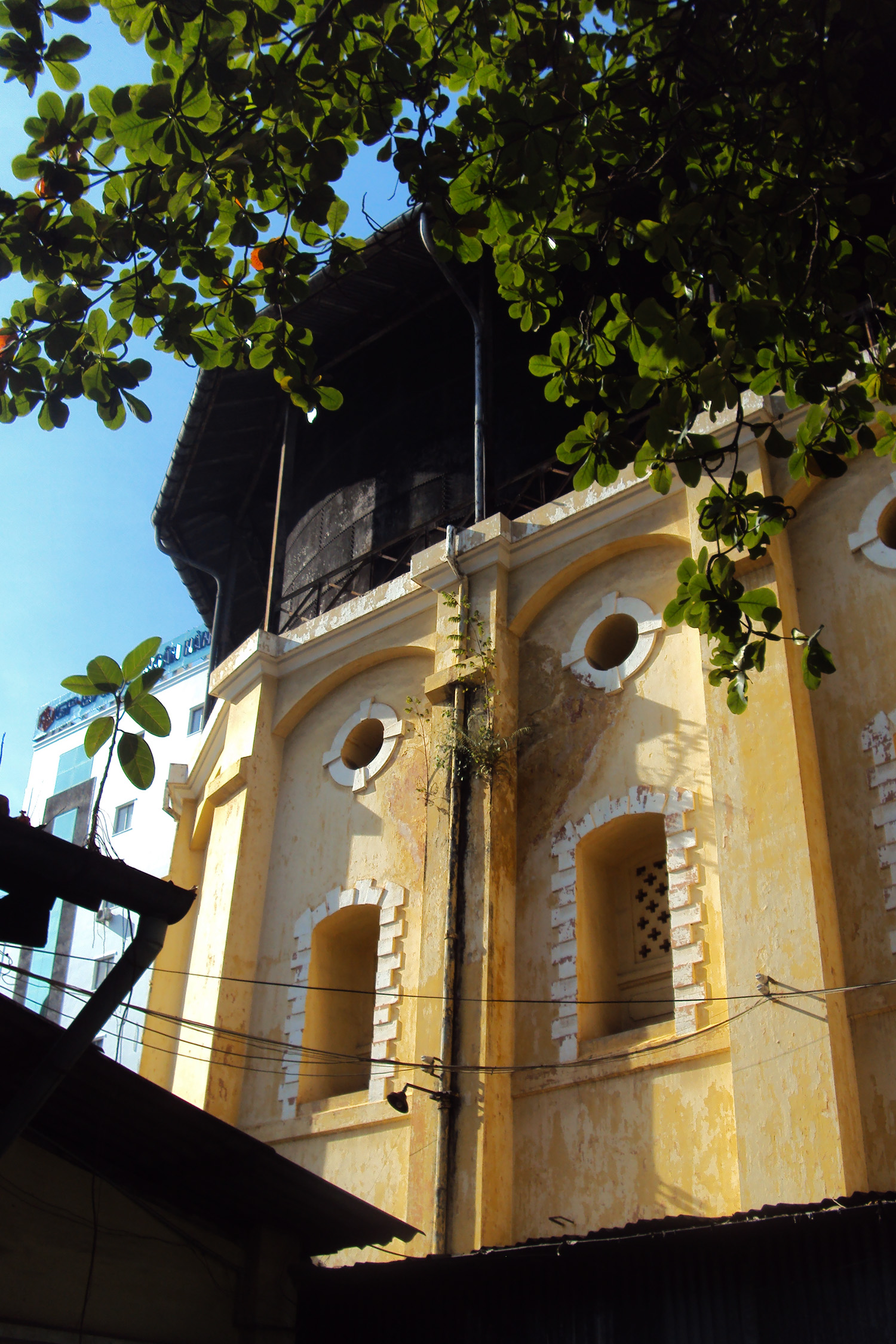
Another view of the Saigon Waterworks tower today
Tim Doling is the author of the guidebook Exploring Saigon-Chợ Lớn – Vanishing heritage of Hồ Chí Minh City (Nhà Xuất Bản Thế Giới, Hà Nội, 2019)
A full index of all Tim’s blog articles since November 2013 is now available here.
Join the Facebook group pages Saigon-Chợ Lớn Then & Now to see historic photographs juxtaposed with new ones taken in the same locations, and Đài Quan sát Di sản Sài Gòn – Saigon Heritage Observatory for up-to-date information on conservation issues in Saigon and Chợ Lớn.

